Lateral Cross

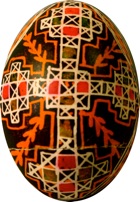
The crosses found on traditional pysanky were generally large, covering one whole side of a pysanka, and equilateral, with all four arms of equal length. In “Ukrainian Arts,” Yara Surmach gives three examples of this type of cross; she describes them as “the Greek cross with four equal arms, either straight with a small cross on each arm, or in the form of triangles turned with their points to the center and the base broken by a wedge. Sometimes the arms become a rhomb, thus forming the ancient Byzantine cross.”

She also goes on to describe crosses with a “Latin” (aka Catholic) influence, those with a prolonged lower arm, and gives the examples below. While both are truly christian crosses, the one on the right is known as the Suppedaneum cross, and is an orthodox cross:


While both these crosses can be seen on pysanky, they are relatively rare, and seen more often on modern folk pysanky than on older ones. Another “Latin” influence, according to Surmach, is the St. Andrew’s cross, an oblique cross with the arms treated as triangles:

While oblique crosses are not uncommon on pysanky, they probably take their roots not from St. Andrew, but from Svaroh, the ancient Slavic god of the sky (from the Sanskrit swarga ‘sky’), the sun, and heavenly fire (thunder). The svarha (swastika), was a tilted cross, and represented the motion of the sun through the sky.

As Vira Manko notes, crosses of the “agricultural” sort were widely divided; the arms might be opened or closed, but they divided space into four:

А variation on the “open” crosses is the diamond cross; it is an upright cross formed from five diamonds. The diamonds are usually filed with decorative elements; these are not infrequently found on Bukovynian pysanky:
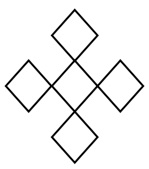
On Bukovynian pysanky of the Hutsul type, you will often see a cross crosslet–a cross with each arm crossed, a variation of the Greek cross, as mentioned above:
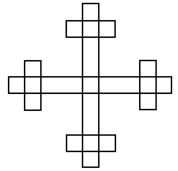
Sometimes this type of cross is fairly straightforward, as in the line drawing shown. At other times they may be much more complex, and instead contain lots of piled up squares, some with Xs through them. Small versions, like the cross below, are often seen:
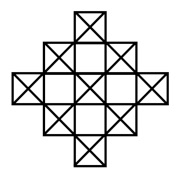
The classic compound cross, however, is a much larger version, will have four or five such components, arranged like the small bars on the cross crosslet. You can see an example in the photo below:

The cross is often combined with the ruzha (another star symbol) to create a complex hybrid symbol. Sometimes the ruzha is simply the central motif of the cross; other times small ruzhy are arranged on the arms as the bars are on a cross crosslet:
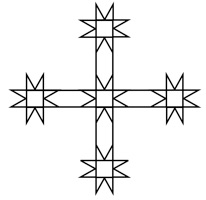
(Note: the numeration of these eggs, i.e. the “Балан - №,” simply reflects the order in which they were photographed and their data recorded. It is just my bookkeeping system.)
Crosses of all kinds

Back to Bukovyna Home
Back to Carpathian Pysanky Home
Back to Regional Pysanky Home
Back to Traditional Pysanky HOME
Search my site with Google





